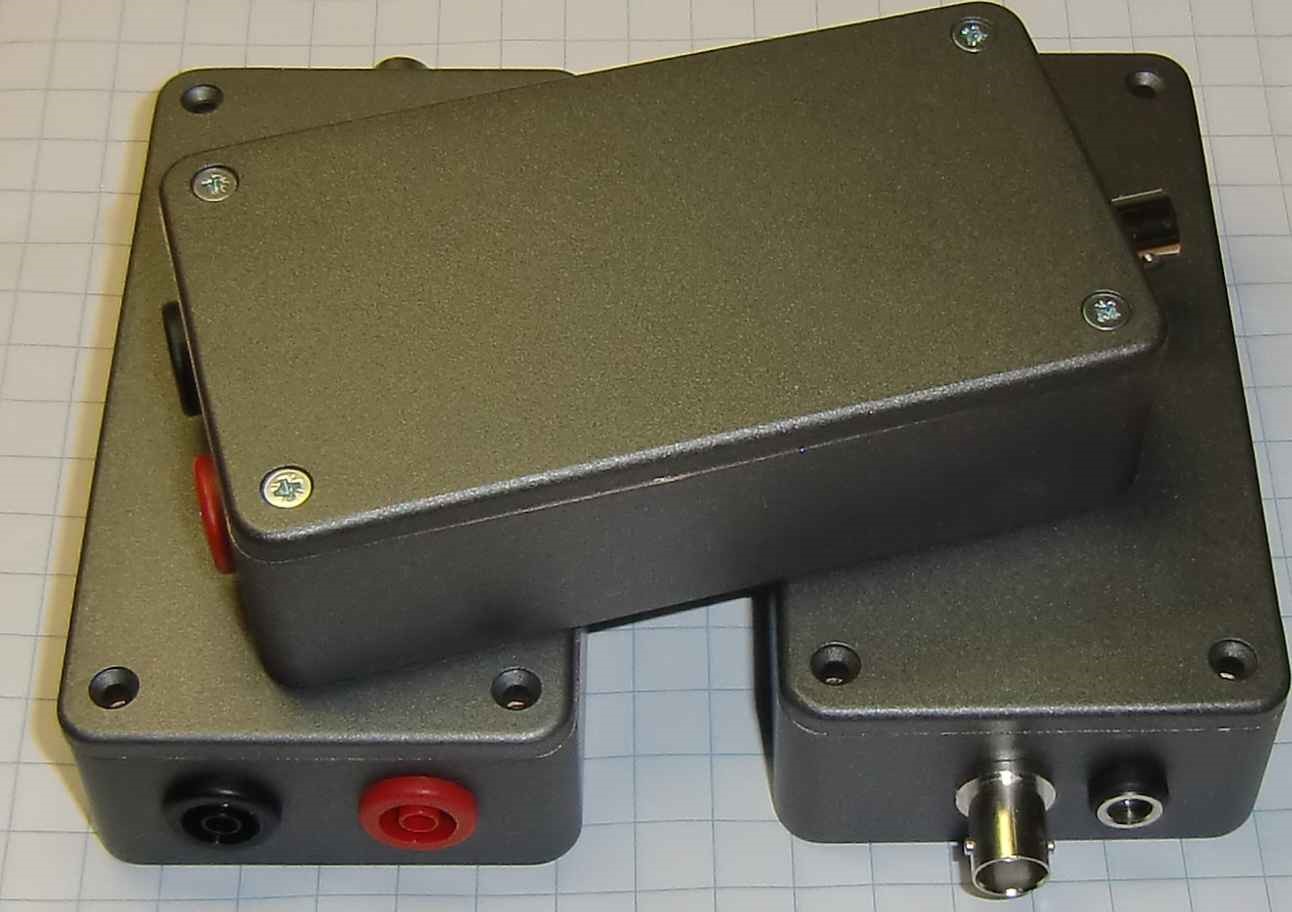High Common Mode Rejection also at high frequency
The DP408 is a differential probe with high bandwidth and high CMRR, also at high frequencies.
Its common mode voltage range is up to 1kV and with these specifications, the DP408 is able to
measure the gate source voltage of the high side MOSFET in a half bridge or full bridge converter, operating at high voltage.

ORDER the DP408
Price: 2300.00 Euro
Order: To order the DP408, sent an email to: info@pownology.com

Measurement results
We are proud to present very good measurement results, showing the performance of the DP408. The figure below shows the measurement
result (YELLOW trace), when the DP408 is used to measure the gate source voltage of the high side MOSFET in a half bridge converter running at 100kHz.
As a reference, the gate source voltage of the low side MOSFET (BLUE) measured with a normal high quality probe is shown, as well as the half bridge voltage (RED).
The half bridge is supplied with 400V, so the half bridge voltage has a peak to peak amplitude of 400V.

Figure 1: Gate source voltage of the low side MOSFET (Blue), half bridge voltage (RED) and gate source voltage of the high side MOSFET measured with
the DP408 (Yellow).
This measurement of the gate source voltage of the high side MOSFET is of utmost importance for the power electronic designer, because
errors and failures in the gate drive circuit can significantly hurt the reliability. This measurement is also very challenging,
because the signal to be measured is superimposed upon on a much larger high frequency square wave signal with steep slopes.
Common Mode Rejection
A practical way to test the Common Mode Rejection of a differential probe, is to short circuit both inputs and connect them to the half
bridge voltage. The output signal, of a probe with a perfect Common Mode Rejection, will then be zero. Real differential probes however,
will show a signal that is not zero and too large to be acceptable.
Figure 2 shows the behavior of the DP408 under this test set up. The slope of the half bridge voltage is 4kV/Ás, which is quite steep.
But even with these steep slopes, the output of the DP408 remains silent.
 Figure 2: When the inputs are short circuited and connected to the half bridge voltage, the output of the DP408 remains silent.
Figure 2: When the inputs are short circuited and connected to the half bridge voltage, the output of the DP408 remains silent.
Figure 3 shows the response of the DP408 at a Common Mode 1kV 100kHz sine wave input signal. The RMS value of the output signal is only 1mV
(referred back to the input: 100mV), so the CMRR at 100kHz is 77dB, which is a very good achievement.
 Figure 3: When the inputs are short circuited and connected to a 1kV 100kHz sine wave voltage, the CMRR is 77dB.
Figure 3: When the inputs are short circuited and connected to a 1kV 100kHz sine wave voltage, the CMRR is 77dB.
Differential Mode operation range of 400V
In figure 4 the DP408 is connected to a Differential Mode 1kV 100kHz sine wave input signal. The DP408 is not damaged by this 1kV signal, because
its inputs are rated for such a high voltage. Because the internal IC's of the DP408 work on a power supply voltage of +5V and -5V, the output voltage
of the DP408 is however limited.
 Figure 4: The DP408 will not be damaged when the inputs are connected to a 1kV 100kHz sine wave voltage. The output voltage is however
limited, because the Differential Mode operation range is 400V.
Figure 4: The DP408 will not be damaged when the inputs are connected to a 1kV 100kHz sine wave voltage. The output voltage is however
limited, because the Differential Mode operation range is 400V.
